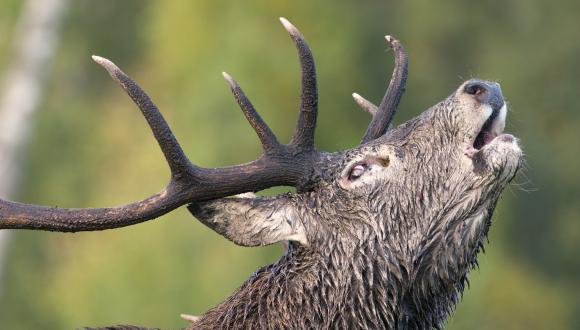Deer
Four species of deer are found in Scotland: red, roe, fallow and sika. Red and roe deer are native species.
Scotland’s majestic red deer is our largest wild land mammal – and one of our most impressive wildlife spectacles. An encounter with this iconic species is unforgettable.
Striking and delicate, the roe deer is found throughout mainland Scotland. Roe deer are increasingly seen in towns and cities, as they only need a tiny amount of cover – some even live close to Glasgow city centre.
Scotland supports the largest population of red deer in Europe. Red deer seem to have expanded modestly in range since the late 1980's. Roe deer have also expanded in range, in central Scotland in particular.
Wild deer are a huge asset to Scotland as:
- an important part in our rural economy and culture
- an integral part of Scotland’s biodiversity
- a source of healthy food and recreational opportunities
Fallow and sika deer were introduced to Scotland through deliberate releases and escapes from country parks.
Red deer
Red deer graze on grasses, sedges, heathers and woody species. They are found in woodland and on moorland right up to the mountain tops. Though widely distributed in Scotland, red deer aren’t found in the Northern Isles, other outlying islands and much of the central belt and south-east.
Woodland red deer are generally bigger and more productive than hill deer, as they have access to better quality foods and shelter. Hill deer may live in groups of hundreds, while woodland red deer prefer smaller group sizes. Stag and hind groups are usually separate other than during the ‘rut’, when you may hear the roar of stags in our glens.
Roe deer
Roe deer browse for favoured herbs, dwarf-shrubs and tree shoots. Roe deer are absent from the Western and Northern Isles and many of the islands off the west coast including Arran and Mull. Widespread on the mainland, they occur at least once in every 10 sq km.
Roe bucks are territorial, and thus generally solitary, from February through to mid-August, but may form small groups in winter. Roe does are accompanied by kids for most of the year, but will actively drive them out before the birth of that year’s young. Does usually give birth to one or two kids.
Deer impacts on habitats
Red deer help to shape habitats, particularly in the uplands. Grazing by red deer can help to:
- maintain some communities
- create niches for seedling regeneration
- provide a source of dung and carrion used by other species
But too much grazing and trampling can have negative consequences for important habitats and the species that rely on them.
Roe deer may:
- limit native woodland regeneration and establishment, particularly in the lowlands and upland fringes of central Scotland
- impact on more palatable woodland ground flora – e.g. bramble – and on coppice regrowth
Roe deer aren’t linked to the same negative grazing and trampling impacts on open ground habitats as red deer. They cause less damage to these habitats due to their smaller body sizes and group sizes, and more selective browsing.
Deer management
Deer have no natural predators in Scotland, so populations must be managed to reduce the damage they cause, help prevent deer vehicle collisions and to supply wild venison for consumption. Deer stalking in Scotland is thought to be worth more than £100 million annually to the economy.
Find out about managing deer.
Threats to deer
Both red and roe deer are thriving in Scotland. The greatest threat to them is from the sika deer, which can cross-breed with the red deer. Our red deer could gradually change in appearance, genetic make-up and behaviour as hybrids become more common.
We must also guard against the introduction of muntjac and Chinese water deer in Scotland, both already present in England.
Protection of deer
Learn about deer and licensing.
Read our guidance for planners and developers on protected animals.
Report a sighting
Find out how to submit records of mammal sightings on The Mammal Society website.





